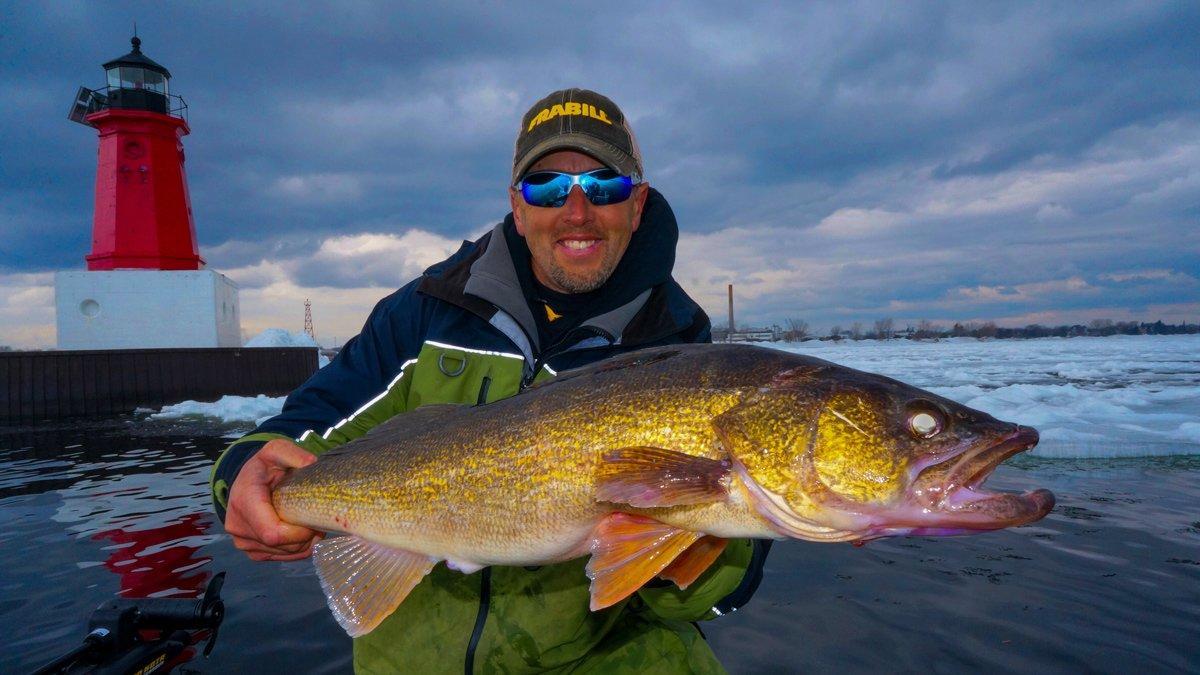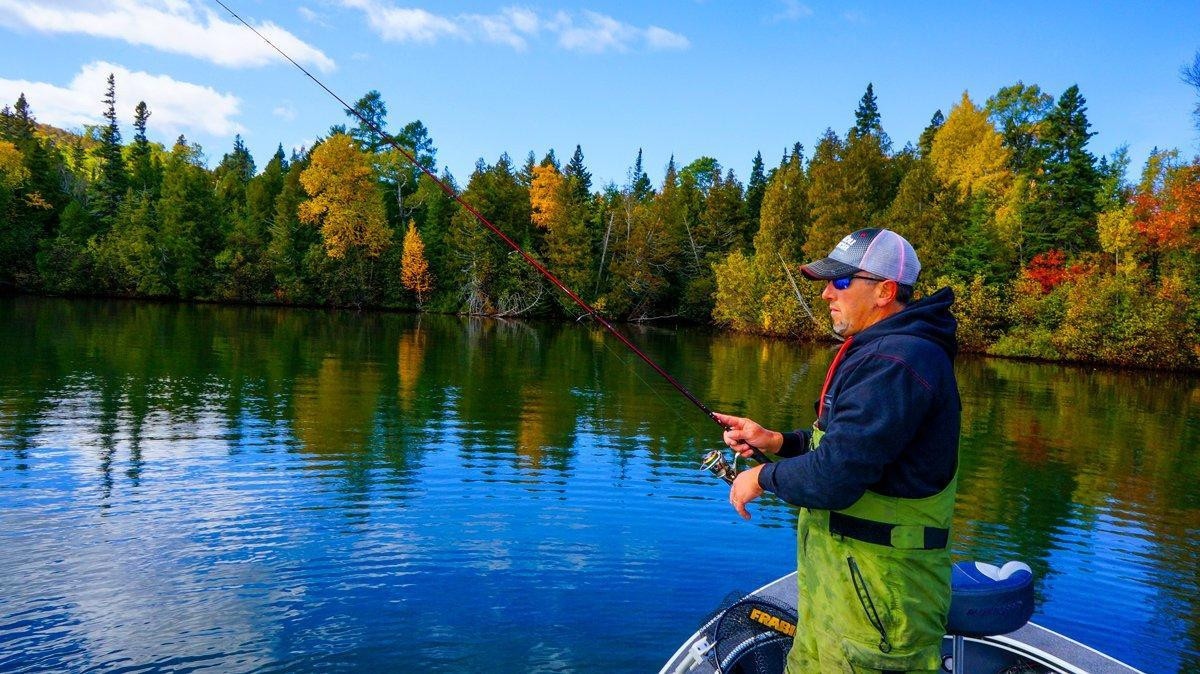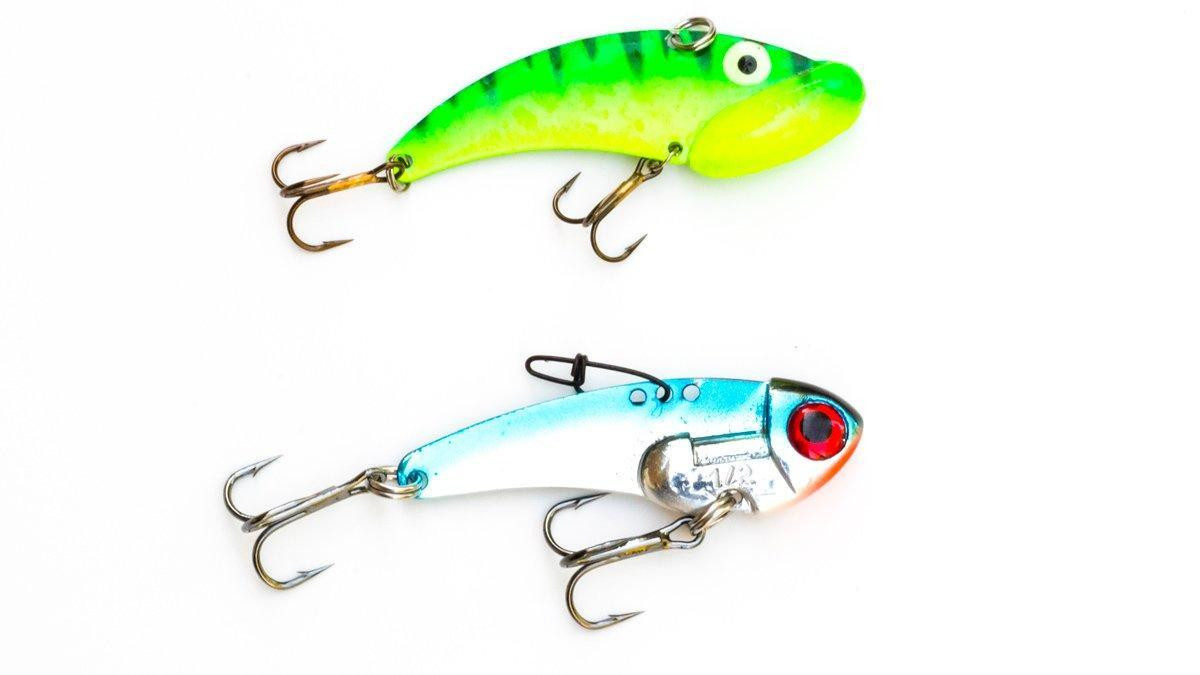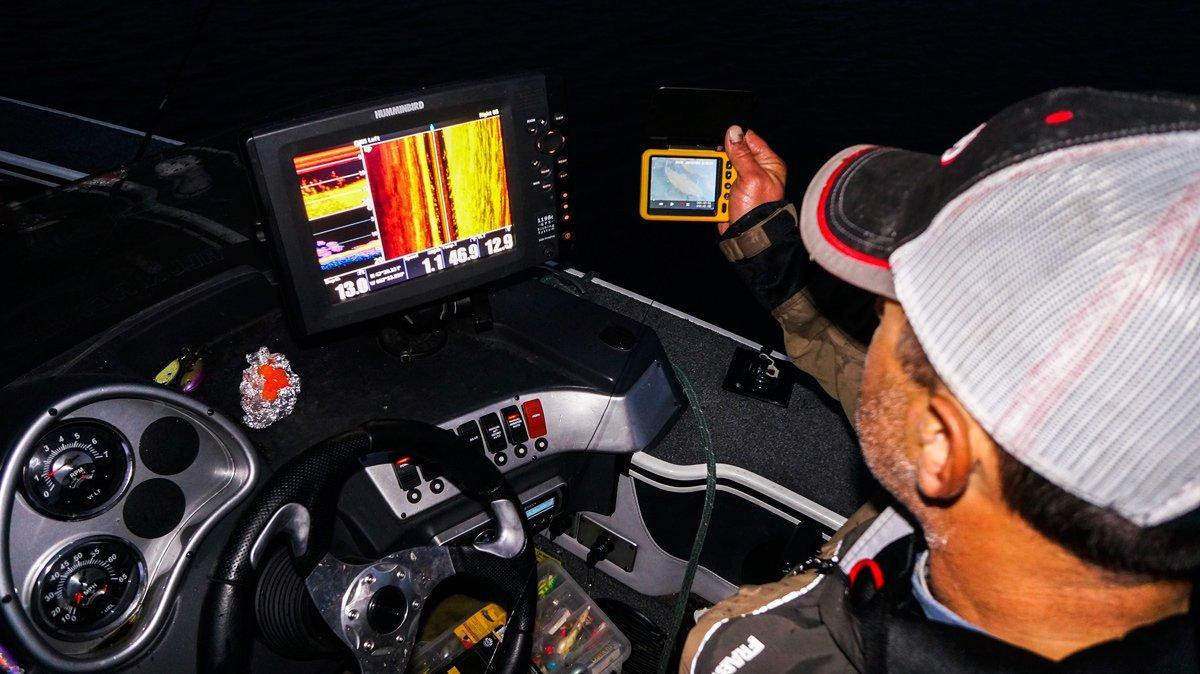When the water’s cold, few lures cover water and trigger reaction bites from walleye as well as blade baits and jigging spoons. These metal baits have a unique following among anglers. Those in the know swear by these lures for hauling in size and numbers of walleye during fall.
“A blade is the single most-consistent fall metal bait I use. It’s my first choice, followed by the jigging spoon,” said Eric Haataja, operator of Wisconsin’s Big Fish Guide Service.
Haataja has more than 20 years experience fishing blade baits and jigging spoons and many instructional videos on the subject. He catches walleye using these fast-sinking baits from deep structure in lakes and various locations in rivers.
Why metal baits
Blade baits and jigging spoons have many strengths. Here are 4 reasons they’re good for catching walleye:
- Long casts – Blade baits and jigging spoons are streamline and heavy, so they cast far. This helps cover water.
- Fast fall – Jigging spoons and blade baits have faster fall rates than a jig and plastic of a similar weight. These metal lures quickly drop into the strike zone of deep walleye, bypassing unproductive sections of the water column.
- Speed triggers hits – In fall during the day, a lot of times walleye will be on structure and on the bottom. You need to cover water to find spots holding walleye, and then fish fast if you want to trigger big walleye to bite.
- Shine and sound – Blade baits and spoons put out lots of vibration. Walleye hone-in on this commotion using their lateral line. The flash of these lures is another attracting feature.
“A walleye is like a fat cat sitting on a couch this time of year. They’re lazy, but quickly pull something past them, and if it’s in their reach, they’re gonna pounce on it out of instinct,” Haataja said.
Where to fish blade baits and spoons
Haataja most often fishes blade baits and jigging spoons in 24 to 40 feet of water. Top areas are deep rock structures, like humps. Sand bars are also good.
Blade baits and spoons also work well in current. Good sites include power plant discharges, dam tailraces, tributary outflows and wing dams.
How to fish blade baits and spoons
Haataja fishes blades and jigging spoons similarly, but each presentation has its own nuances.
Tips for blade baits
- Less is more – “I can’t overemphasize this enough: don’t overwork the blade,” Haataja said. “You just want to pull it a few inches off the bottom. Don’t pull it 12 inches. Just use a 3 to 4-inch stroke to get the ‘brrrr’ vibration going and keep the blade down in the strike zone, looking like a little minnow shooting across the bottom. Then pop it up again, but don’t drop the rod. Let it swing down on tight line.”
- Different vibrations – Experiment with different blade bait weights and styles as walleye can have preferences. Haataja finds the fast, tight vibrations of a small, 1/4-ounce blade is often irresistible to fall walleye.
- Current tips – Blades work well in rivers. Make a 45-degree cast across current. Hop the blade off bottom as it swings downstream. Or, cast down current and slowly retrieve with a pull pause motion. Expect hits on the drop or when the bait’s on bottom.
Tips for spoons
- Casting spoons – “It’s important to keep that line tight on the fall. Most hits come as the bait is fluttering down or when it hits bottom. If you have slack in the line you will not feel anything. When you feel it hit bottom, give it a short, 10-inch pop. After you pop it, keep the rod in a vertical position, tight-lining it as it falls. Then give it another short 10 inch snap, feel it flutter down and feel it hit bottom,” Haataja said.
- Working structure – Haataja changes the casting angle by 10-degrees every toss to dissect structure. Thoroughly covering the area this way increases the odds of locating a “fat-cat” walleye willing to pounce.
- Straight-down tactics– Vertical jigging a spoon is effective at catching walleye holding tight to deep structure. Lift the bait 12 to 18 inches on each upstroke. Pounding the spoon on bottom attracts fish. Pause to trigger hits. Counting down a spoon and jigging over suspending walleye chasing baitfish also works.
Baits and gear
Haataja uses 1/8- to 3/4-ounce versions of the Johnson ThinFisher, Wolf Big Dude, and Original Silver Buddy blades. Jigging spoons span 1/4 to 1 ounce. The ACME Kastmaster, various Hopkins models, Luna Jigs, Buzz Bombs, and Custom Jigs & Spins Slender Spoon are recommended.
For finesse, deep-water tactics with small, light blades and jigging spoons, Haataja uses a medium-light rod with 8-pound braid with a 4-foot, 10-pound fluorocarbon leader. This sensitive set-up makes it easy to detect bottom contact as well as a strike. It cushions the fight, helping small hooks stay pegged.
For 3/4-ounce and heavier blades, Haataja uses a 7-foot, medium Abu Garcia Veracity spinning rod and Revo Premier spinning reel spooled with 10-pound Berkley Nanofil and a 10-pound Berkley fluorocarbon leader. The 1/2-ounce or heavier jigging spoons are fished using a medium casting set-up spooled with 12-pound fluorocarbon, or 30-pound braid with a 12-pound leader.
Haataja uses a snap-swivel to connect a spoon. The hardware eliminates line twist from its fluttering action. For blade baits he uses a quality locking snap in most cases. Although certain blades perform better when tied direct to their split ring. In-water observation and vibrations reveal the best connection.
Keep at it
“Of all the techniques I teach, blade bait fishing takes more time and persistence to have success,” Haataja said.
Blade baits and jigging spoons may take a while to master, but these presentations are potent for catching cold-water walleye. Use them lures long enough, and odds are good you’ll become a metal-bait buff. Just remember: don’t overwork the blade.
Before wetting a line Haataja uses Side Imaging to locate fish on structure. Vacant spots are bypassed. Once his Humminbird displays a pod, he often uses an Aqua-Vu Micro underwater camera to verify they’re walleye before dissecting the area with a blade or jigging spoon.















